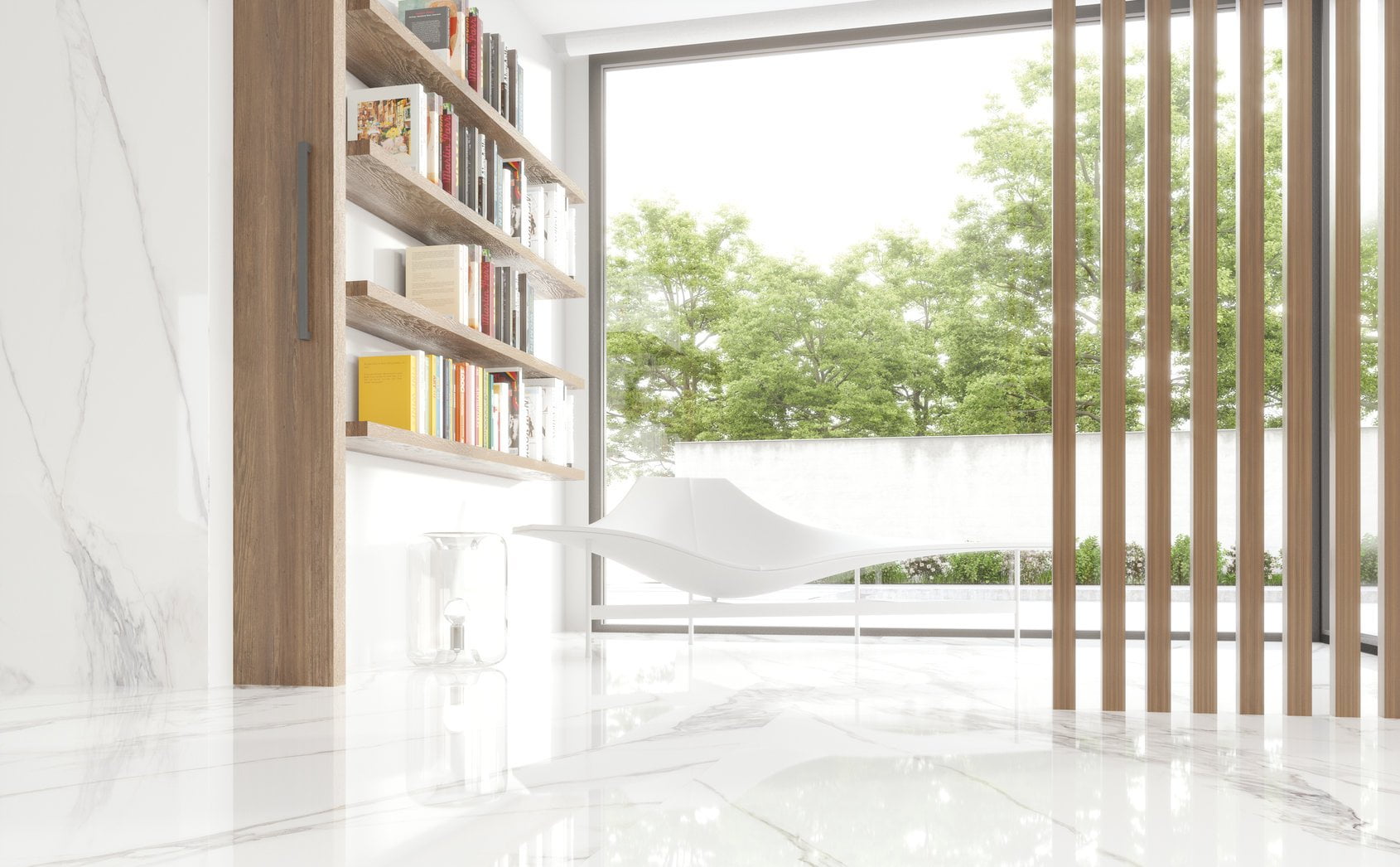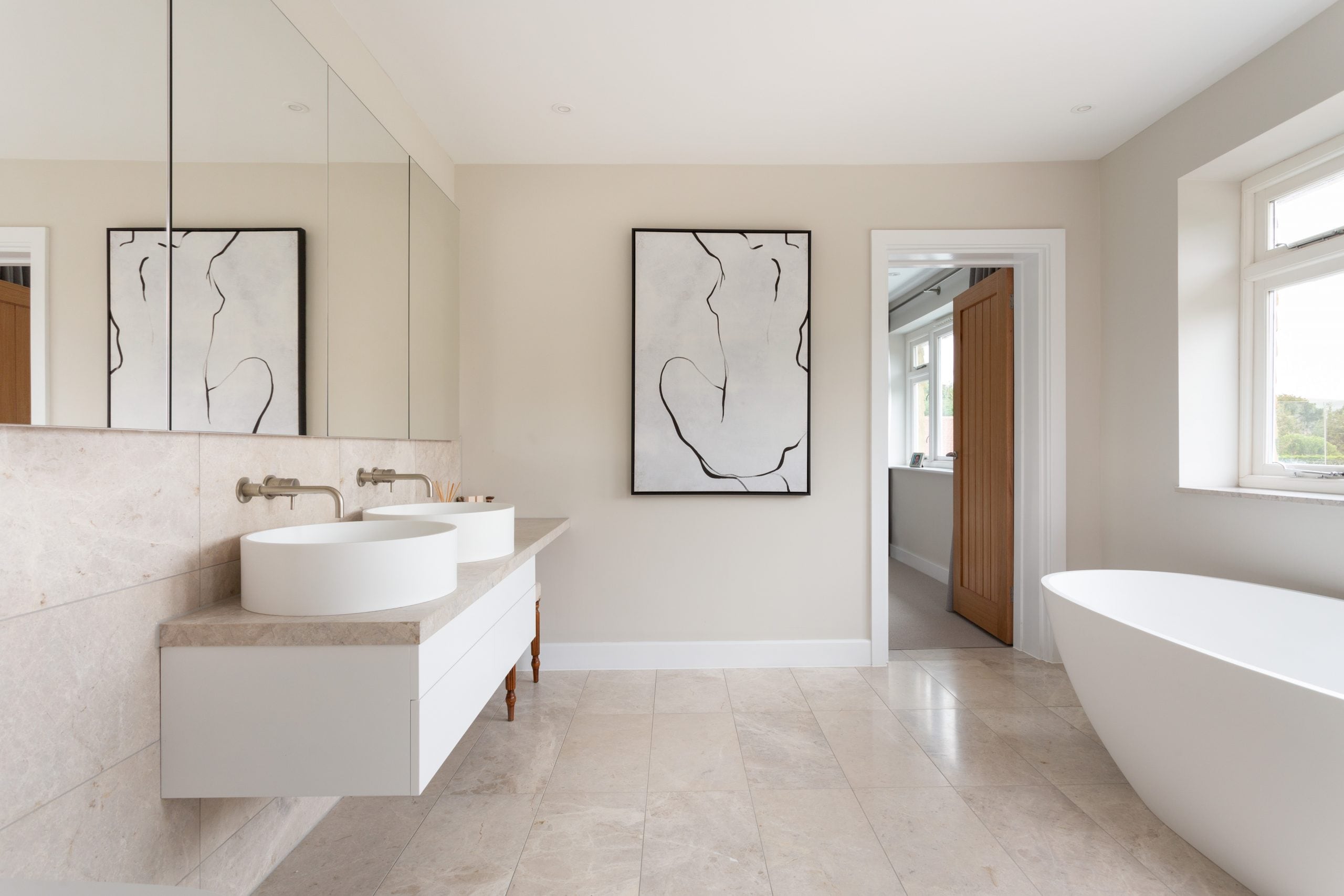Sealing & Maintenance
As with all natural products, stone tiles require a certain degree of care. Stone tiles should be ‘dry-laid’ to ensure a good blend of the colour variation across the installation.
Damp tiles should be stored in a well-ventilated area to dry thoroughly before fixing. It is important to establish which way the tiles are to be laid before any tiling is started. Make sure the person fitting the tiles knows what the tiles should look like. ‘Shuffle’ the batch to ensure that any colour and tonal variations are well mixed. Minor chips and blemishes should be expected and are best used for cuts or well mixed into the floor.
Pre-cleaning: We recommend that the stone is cleaned with a stone cleaning product to remove general dirt and quarry dust from the riven areas and pores. After use, rinse the surface completely and allow to dry for a minimum of 24 hours or until the body is dry rather than surface dry. Ensure your tiles are being laid by a professional installer who has experience in working with natural stone.
Sealing the Tiles: As with all natural products, stone tiles require a certain degree of care. All stone tiles are porous; therefore, it is important to seal the stone correctly to reduce the natural absorption and maintain the desired appearance. If the recommended care system is used the surface will be easier to maintain. It is important for the correct products to be used when sealing, finishing and maintaining your tiles. The products we have selected have been specifically chosen to enhance, protect and maintain your tiles. You should expect the sealing process to darken both the tiles and grout.
Preparation: Prior to sealing the adhesive bed should be dry and cured and the grout joints clean, dry and free from adhesive residues, dirt, dust and other loose debris. The tiles must be dry and clean otherwise you may seal in dirt or moisture which will impair the final appearance. The process of sealing should be kept meticulously clean and all materials including brushes and cloths etc should be new and unused. Please refer to the manufacturers’ guidelines on drying times. Traffic across a newly sealed floor should be kept to a minimum for the first week as sealants can take a few days to fully oxidise and may not be fully effective during this time.
Sealing: After fixing the tiles, ensure all moisture has been released before proceeding with the sealing process – be led by your professional installer. We recommend sealing natural stone with APEX – a water based natural finish impregnating sealer for interior and exterior use. We recommend that a number of sample tiles are tested for porosity, which will give an indication of the amount of sealer the tiles will require.
Check the tiles are completely dry, clean and stain free (any dirt or marks left on the surface of the tiles will not be removable after sealing).
Shake the bottle of MN Stain Stop well before and during use.
Work to the grout lines in small controllable sections i.e. 1-2m2 at a time.
Apply one application with a suitable applicator to the face and edges of the tile (to ensure no bleeding from the grout). Add more product if the tile requires it within the saturation time. Allow the product to soak in to the body of the tile. It is important to remove any excess that has not been readily absorbed within 10-15 minutes of application ensuring the surface is completely dry before moving on to the next area. After 1-2 hours the floor can be walked on but should be left to dry and protected from dirt and water for 24 hours.
External Stone
There is much debate about sealing of stone externally and it is a matter of personal preference.
We always advise sealing your natural stone. Sealers are basically an “impregnator” which means that they are a liquid that soaks into natural stone tiles to create a kind of barrier. Stone can either be sealed in order to protect it from water, staining agents and organic matter or left to weather naturally. Old stone floors were never sealed and yet still look beautiful today. However, natural stone is porous and will absorb liquid from anything left on the surface which can affect the overall look of the material. The choice will come down to your individual preference. Sealing your slabs will help to protect your stone against staining.
How often should you reseal natural stone?
For lower traffic areas, like a kitchen backsplash or bathtub surround, you should re-seal your natural stone tiles every few years. Depending on the amount of traffic, some installers choose to re-seal their natural stone tiles every 18 months, while others choose to re-seal their tiles every 4 to 5 years.








